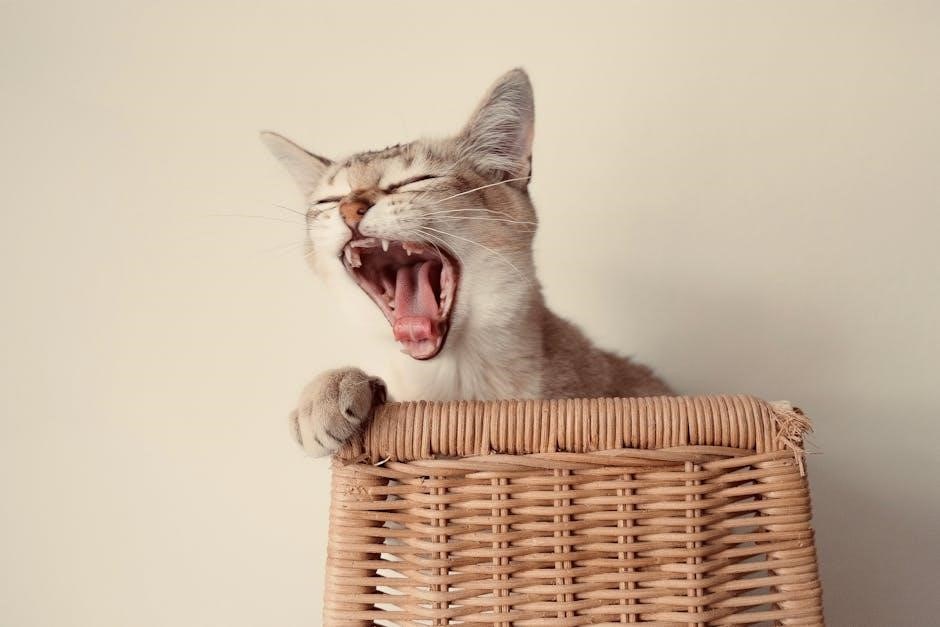Washington Irving’s classic tale, first published in 1820, is a gothic story set in the Hudson River Valley. It explores superstition, folklore, and romance, centered around Ichabod Crane and the mysterious Headless Horseman. The story is widely available as a free PDF, making it accessible to readers worldwide.
1.1. Brief Overview of the Story
The Legend of Sleepy Hollow is a gothic tale by Washington Irving, set in the Hudson River Valley. It follows Ichabod Crane, a schoolteacher, who competes with Brom Bones for Katrina Van Tassel’s hand. The story intertwines romance, superstition, and horror, culminating in Ichabod’s chilling encounter with the Headless Horseman, leaving his fate ambiguous and forever etched in American folklore.
1.2. Historical Context of the Tale
Set in the Hudson River Valley during the late 18th century, the story reflects the region’s Dutch heritage and folklore. Irving drew inspiration from European traditions, blending them with American settings to create a unique cultural narrative. The historical backdrop of Sleepy Hollow, with its superstitions and isolated communities, enriches the tale’s eerie atmosphere and timeless appeal, as noted in various PDF editions of the story.

Background and Publication of the Story
First published in 1820, “The Legend of Sleepy Hollow” is part of Irving’s collection of stories. It remains widely available as a free PDF download today.
2.1. Original Publication in 1820
First appearing in 1820, “The Legend of Sleepy Hollow” was part of Washington Irving’s collection of short stories. Its original publication marked a significant moment in American literature, blending folklore and horror. Today, the story remains popular and is freely available as a PDF, ensuring its accessibility to modern readers worldwide.
2.2. The Setting of Sleepy Hollow
The story unfolds in the early 19th-century Hudson River Valley, specifically in the small, rural town of Sleepy Hollow. Known for its haunting atmosphere, the setting is steeped in Dutch folklore and superstition. The old woods, rolling hills, and mysterious river create a backdrop of eerie beauty, perfectly capturing the essence of Irving’s gothic tale.

Washington Irving and His Writing Style
Washington Irving, a pioneering American writer, crafted “The Legend of Sleepy Hollow” with a blend of gothic themes, folklore, and vivid descriptions, creating a haunting atmosphere that captivates readers.
3.1. Irving’s Role in American Literature
Washington Irving is celebrated as a foundational figure in American literature, known for blending European folklore with local traditions. His works, including “The Legend of Sleepy Hollow,” introduced unique American stories to the world, establishing a national literary identity and influencing future writers with his distinctive narrative style and cultural depth.
3.2. The Influence of European Folklore
European folklore significantly shaped the narrative of “The Legend of Sleepy Hollow,” as Irving drew inspiration from ghostly tales and supernatural themes common in European traditions. The Headless Horseman, a figure rooted in Dutch folklore, exemplifies this influence, blending eerie atmospheric settings with dark, haunting imagery to create a unique American legend with European storytelling roots.

Main Characters in the Story
Ichabod Crane, a lanky schoolteacher, competes for Katrina Van Tassel’s hand, while the Headless Horseman haunts Sleepy Hollow, adding mystery and fear to the tale.
4.1. Ichabod Crane: The Schoolteacher
Ichabod Crane is the protagonist, a Connecticut schoolteacher with a gangly appearance and a love for music and reading. His ambition leads him to Sleepy Hollow, where he seeks to marry Katrina Van Tassel. Crane’s rational nature contrasts with the superstitious environment, making him both relatable and vulnerable to the tale’s eerie elements. His disappearance leaves a lasting mystery.
4.2. The Headless Horseman: A Mysterious Figure
The Headless Horseman is a ghostly figure central to the tale, said to be the spirit of a Hessian soldier whose head was shot off during the Revolutionary War. Riding in search of his missing head, he embodies the eerie folklore of Sleepy Hollow, striking fear into the hearts of its residents and visitors, including Ichabod Crane.

Plot Summary and Key Events
The story centers around Ichabod Crane, a schoolteacher vying for Katrina Van Tassel’s hand, and his chilling encounter with the Headless Horseman, a haunting figure.
5.1. The Competition for Katrina’s Hand
Katrina Van Tassel, the beautiful daughter of a wealthy farmer, becomes the prize in a rivalry between Ichabod Crane, a timid schoolteacher, and Brom Bones, a robust local suitor. Both men vie for her affection, showcasing their contrasting personalities and backgrounds, while the eerie atmosphere of Sleepy Hollow heightens the tension in their pursuit of her hand.
5.2. The Encounter with the Headless Horseman
Ichabod Crane’s haunting encounter with the Headless Horseman is a pivotal moment in the tale. The spectral figure, believed to be the ghost of a Hessian soldier, chases Ichabod through the dark woods near Sleepy Hollow. The terrifying pursuit ends mysteriously, leaving Ichabod’s fate unknown and the legend of the Horseman etched in local lore, adding to the tale’s enduring mystery and suspense.
Themes and Symbolism in the Story
The tale explores themes of fear, superstition, and the supernatural, with the Headless Horseman symbolizing death and the unknown, deeply rooted in American folklore and gothic elements.
6.1. The Theme of Superstition and Fear
Superstition and fear are central to the story, as the residents of Sleepy Hollow believe in ghostly apparitions and curses. Ichabod Crane’s encounter with the Headless Horseman embodies this theme, creating a sense of dread that permeates the narrative, highlighting how fear can be both a product of imagination and a powerful force shaping human behavior and decisions.
6.2. The Symbolism of the Headless Horseman
The Headless Horseman symbolizes the supernatural and the consequences of unfinished business. As a spectral figure, he embodies the fear of the unknown, haunting Sleepy Hollow in search of his missing head. His presence amplifies the theme of superstition, representing both the villagers’ fears and Ichabod Crane’s fate, leaving a lasting impact on the story’s eerie atmosphere and moral undertones.
The Historical Context of Sleepy Hollow
The Hudson River Valley in the 18th century was a melting pot of Dutch and American cultures, influencing Irving’s eerie setting in “The Legend of Sleepy Hollow.”
7.1. The Hudson River Valley in the 18th Century
The Hudson River Valley in the 18th century was a region rich in history and culture, blending Dutch colonial influences with emerging American identity. The area’s dense forests, rolling hills, and rivers created a hauntingly beautiful backdrop, inspiring Irving’s eerie setting for “The Legend of Sleepy Hollow.” Dutch settlements and their folklore deeply shaped the story’s atmosphere and themes, reflecting the region’s unique heritage.
7.2. The Dutch Settlements and Their Culture
The Dutch settlements in the Hudson Valley brought a distinct cultural flavor, with their folklore, architecture, and traditions. Irving drew inspiration from these communities, incorporating their superstitions and stories into “The Legend of Sleepy Hollow.” The Dutch settlers’ belief in spirits and ghosts enriched the tale’s eerie atmosphere, while their close-knit society provided the backdrop for the story’s unfolding drama and timeless appeal.
Availability of “The Legend of Sleepy Hollow” in PDF
The story is widely available as a free PDF download from platforms like Project Gutenberg and ManyBooks, ensuring easy access for readers worldwide to enjoy this classic tale.
8.1. Free Download Options for the PDF
Multiple websites offer free PDF downloads of “The Legend of Sleepy Hollow.” Platforms like Project Gutenberg and ManyBooks provide the story without registration or fees. Additionally, some sites like Oxford University Press offer free access to this classic tale, making it easily accessible to readers worldwide who wish to enjoy Irving’s masterpiece digitally.
8.2. Popular Platforms for the PDF Version
Popular platforms offering “The Legend of Sleepy Hollow” in PDF include Project Gutenberg, ManyBooks, and Oxford University Press. These sites provide high-quality, free downloads of the story, allowing readers to access Irving’s classic tale with ease. Many of these platforms also offer additional features like customizable reading options and downloadable formats for various devices, enhancing the reading experience.

The Cultural Impact of the Story
“The Legend of Sleepy Hollow” has deeply influenced American folklore, inspiring numerous adaptations in film, literature, and popular culture, ensuring its enduring presence in societal imagination.
9.1. Adaptations in Film and Literature
The tale has inspired countless adaptations, including films like Disney’s “The Adventures of Ichabod and Mr. Toad” and Tim Burton’s “Sleepy Hollow.” Literary reimaginations and stage plays further cement its cultural significance, while the free PDF availability ensures its reach to modern audiences, fostering continued inspiration across media platforms and artistic expressions.
9.2. The Story’s Influence on Popular Culture
The Legend of Sleepy Hollow has deeply influenced popular culture, with its iconic elements like the Headless Horseman becoming symbols of horror. References to Ichabod Crane and the Horseman appear in films, TV shows, and music, while the tale’s themes inspire art and literature. Its enduring appeal is enhanced by free PDF availability, making it a timeless cultural touchstone.
Analysis of the Story’s Ending
- The ending leaves Ichabod Crane’s fate ambiguous, sparking debate: was he taken by the Horseman or tricked by Brom Bones?
- Theories remain unresolved, with Irving’s deliberate ambiguity leaving readers to ponder the truth, enhancing the tale’s mystique and lasting appeal.
10.1. The Ambiguity of Ichabod’s Fate
The story’s conclusion leaves Ichabod Crane’s fate uncertain, with two prevailing theories: he was either taken by the Headless Horseman or fled after being outsmarted by Brom Bones. Irving’s deliberate ambiguity sparks debate, as no definitive resolution is provided, leaving readers to ponder the truth behind Ichabod’s disappearance and the mysterious events in Sleepy Hollow. This ambiguity has fueled enduring discussions among readers and scholars alike.
10.2. Theories About the Headless Horseman
The Headless Horseman is believed to be the ghost of a Hessian soldier whose head was shot off during a battle. Another theory suggests he may be Brom Bones in disguise, aiming to scare Ichabod away. Irving’s ambiguity leaves both possibilities open, allowing readers to interpret the Horseman’s identity, adding depth to the tale’s enduring mystery and intrigue.
Comparisons with Other Works by Irving
Washington Irving’s works, like “Rip Van Winkle,” share similar themes of folklore and the supernatural. However, each story maintains unique elements, showcasing Irving’s diverse storytelling range.
11.1. “Rip Van Winkle” and Its Similarities
Both “The Legend of Sleepy Hollow” and “Rip Van Winkle” are rooted in Dutch folklore, blending humor, superstition, and the supernatural. Irving masterfully crafts these tales to explore themes of identity and cultural heritage, leaving a lasting impact on American literature. Both stories are available in PDF formats, ensuring their accessibility to modern readers.
11.2. Irving’s Other Short Stories
Irving’s works, such as “Rip Van Winkle” and “The Legend of Sleepy Hollow,” are celebrated for blending folklore, humor, and the supernatural. His stories often explore themes of identity and cultural heritage, showcasing his mastery of American literature. These tales, widely available in PDF formats, remain popular for their timeless appeal and enduring influence on literary traditions.
The Role of Katrina Van Tassel
Katrina Van Tassel, the beautiful daughter of Baltus Van Tassel, is a central figure in the story, embodying grace and kindness, while also showcasing strength and independence.
12.1. Katrina as a Central Character
Katrina Van Tassel is portrayed as a central character, embodying beauty, grace, and kindness. Her role in the story revolves around her relationships with Ichabod Crane and Brom Bones, highlighting her strength and independence. As the daughter of Baltus Van Tassel, she represents the heart of the Van Tassel family and the community of Sleepy Hollow, making her a pivotal figure in the narrative.
12.2. Her Relationship with Ichabod and Brom
Katrina Van Tassel is the object of affection for both Ichabod Crane and Brom Bones, creating a rivalry between them. Her kindness and charm captivate Ichabod, while Brom’s confidence and local status make him a formidable competitor. Katrina’s interactions with both men drive the plot, reflecting themes of ambition, romance, and the clash of personalities in Sleepy Hollow’s close-knit community.
The Significance of the Sleepy Hollow Legend
The Legend of Sleepy Hollow is a cornerstone of American folklore, blending supernatural elements with rich cultural heritage. Its enduring popularity highlights its timeless appeal and influence on literature.
13.1. The Story’s Place in American Folklore
The Legend of Sleepy Hollow holds a prominent place in American folklore, blending European influences with local traditions. Its eerie setting and supernatural themes captivate audiences, making it a defining tale in the nation’s literary heritage. Available as a free PDF, it remains a beloved classic, preserving its cultural significance for future generations to enjoy.
13.2. Its Enduring Popularity Over the Years
The Legend of Sleepy Hollow remains a timeless classic, captivating readers with its gothic atmosphere and memorable characters. Its availability as a free PDF has ensured its accessibility, while adaptations in film and literature have kept it relevant. The story’s blend of horror and romance continues to enchant audiences, solidifying its place as a cherished tale in American culture.
The Story’s Educational Value
The Legend of Sleepy Hollow is widely used in schools for teaching literary elements like Gothic themes, character development, and historical context. Its availability as a free PDF makes it an accessible resource for educators and students, fostering engagement with classic American literature and its cultural significance.
14.1. Teaching the Story in Schools
The Legend of Sleepy Hollow is a valuable educational tool, often taught in schools to explore Gothic themes, folklore, and historical context. Its availability as a free PDF makes it easy for educators to incorporate into lesson plans, allowing students to analyze its literary elements and cultural significance while fostering critical thinking and engagement with classic American literature.
14.2. Analyzing the Story’s Literary Elements
Irving’s masterful use of setting, characterization, and symbolism in The Legend of Sleepy Hollow creates a haunting atmosphere. The PDF version allows readers to delve into themes like superstition, fear, and ambition. Ichabod Crane’s character represents rationality vs. tradition, while the Headless Horseman symbolizes the unknown. The story’s enduring appeal lies in its rich literary elements, making it a timeless classic for analysis.
Washington Irving’s timeless tale remains a cornerstone of American literature. The Legend of Sleepy Hollow’s enduring appeal lies in its rich storytelling and cultural significance, ensuring its continued relevance through PDF availability.
15.1. The Timeless Appeal of “The Legend of Sleepy Hollow”
The story’s blend of folklore, romance, and horror captivates readers. Its exploration of superstition and fear resonates across generations, making it a beloved classic. The availability of free PDF versions ensures its accessibility, allowing new readers to discover its timeless charm and enduring cultural impact. Irving’s masterpiece continues to enchant, solidifying its place in literary history.
15.2. The Importance of Preserving Classic Literature
Preserving classic literature like “The Legend of Sleepy Hollow” ensures its cultural and educational value endures. The story’s timeless themes, such as superstition and romance, offer insights into historical contexts and literary evolution. Making it available as a free PDF promotes accessibility, allowing future generations to appreciate its contribution to American folklore and literary heritage.